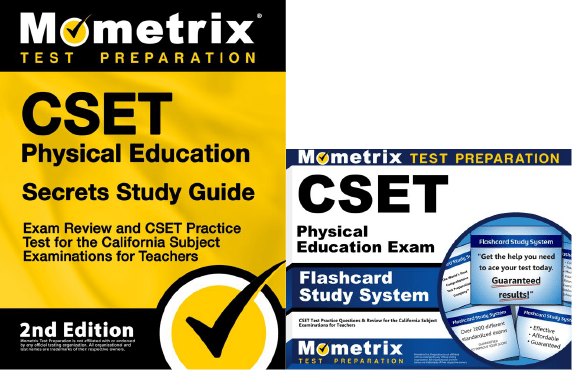If you need help studying for the CSET Physical Education test or just want some more information about what the test is like, you’ve come to the right place!
Click below to take a free CSET Physical Education practice test!
What’s on the Test?
The CSET Social Science test contains 125 questions, and you’ll be timed at 5 hours. Most of the questions are in your standard multiple-choice format, but five of the questions are in a constructed-response format.
The exam is split into three subtests, which you can choose to take separately or together.
SUBTEST I (129)
42 questions | 1 hours and 45 minutes
Growth, Motor Development, and Motor Learning (21 questions)
- Individual differences
- Perceptual-motor development
- Physical and developmental changes
- Motor learning
- Motor task analysis
- Conditions affecting growth, motor development, and motor learning
- Developmental differences affective motor skills acquisition
The Science of Human Movement (21 questions)
- Body systems
- Basic kinematic and kinetic principles of motion
- Biomechanical principles
- Movement analysis
- Effects of exercise
- Components of wellness
- Physical fitness testing and prescription
- Factors affecting physical performance
- Safety, injury prevention, and first aid
- Physiological principles of fitness
SUBTEST II (130)
42 questions | 1 hours and 30 minutes
The Sociology and Psychology of Human Movement (11 questions)
- Personal development
- Theories related to motivation
- Social development
- Role of movement activities in society
- Factors influencing activity choices
Movement Concepts and Forms (25 questions)
- Fundamental and creative movement skills
- Dance concepts and forms
- Gymnastics movements
- Aquatic skills
- Sports and games
- Outdoor education
- Nontraditional and cooperative activities
- Combative activities
- Fitness activities
Assessment and Evaluation Principles (6 questions)
- Evaluation methods in physical education
- Test construction, evaluation, and administration
- Test characteristics
- Assessment techniques and tools
- Types of evaluation
- Basic statistical applications
- Interpretation and communication of assessment data
SUBTEST III (131)
41 questions | 1 hour and 45 minutes
Professional Foundations (16 questions)
- Philosophies of physical education
- Historical development
- Current research, trends, and issues
- Legal and ethical issues
- Interrelationships of the subdisciplines of kinesiology
- Professional responsibilities, resources, and organizations
- The relationship between human movement activities and values
Integration of Concepts (25 questions)
- Interpretation and application of the subdisciplines of kinesiology
- Selecting, adapting, and modifying activities
- Developmental progressions
- Learning concepts and principles
- Connections between physical education and other disciplines
How to Register
To get started with the registration process, you’ll need to create an NES account on their website. You can then register for the exam via your account.
The testing fee is $297 for the full exam. If you choose to split each subtest into their own sessions, each subtest costs $99.
How the Exam is Scored
The CSET Physical Education test is scored using a scaled scoring method. Here’s how it works:
For every question you answer correctly, you get one point added to your raw score. At the end of the test, your final raw score will be converted to a scaled score ranging from 100 to 300.
The reason your raw score is converted to a scaled score is because everyone that takes the test is given a slightly different set of questions. Since everyone has a different arrangement of questions, and because some questions are harder than others, converting your raw score to a scaled score ensures a more even playing field.
Retaking the Exam
If you don’t get the score you want on your first try, that’s okay! You can take the exam again after a mandatory 45-day waiting period.
FAQs
How many questions are on the CSET Physical Education exam?
The exam contains 125 questions.
What is the time limit for the CSET Physical Education exam?
The exam is timed at 5 hours.
What is the passing score for the CSET Physical Education exam?
You’ll need to get a final scaled score of at least 220 on each subtest to pass.
How much does the CSET Physical Education exam cost?
The testing fee for the full exam is $297.



 CSET Study Guide
CSET Study Guide CSET Flashcards
CSET Flashcards